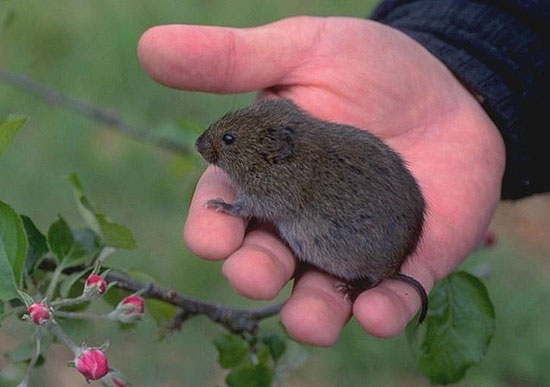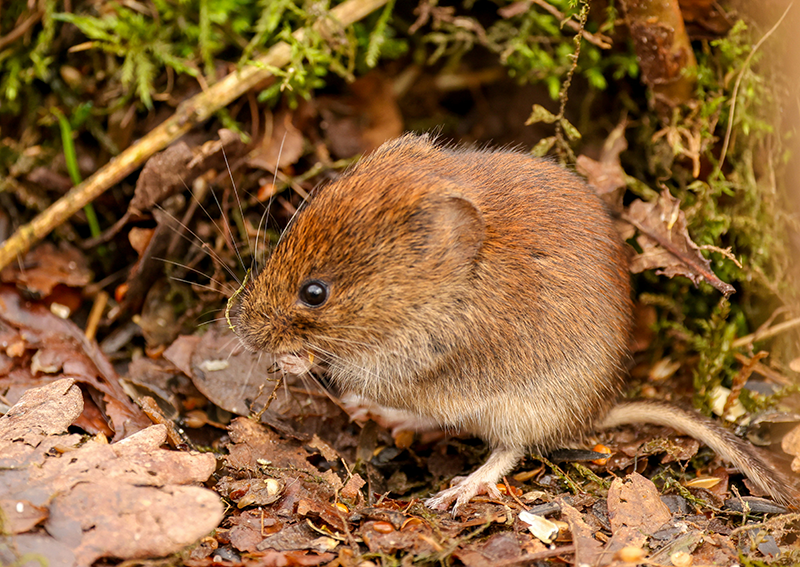Handling Vole Damage: Effective Control Methods
Handling Vole Damage: Effective Control Methods
Blog Article
Vole Insect Control Demystified: A Full Introduction of Infestation Discovery and Efficient Therapy Methods
As homeowner and garden enthusiasts, the invasion of voles can be a relentless issue that needs a methodical method for efficient monitoring. By recognizing the behavioral patterns of these evasive rats, one can get important insights into their preferences and behaviors. From refined signs of infestation to the execution of targeted control procedures, navigating the world of vole insect control requires a mix of understanding and critical action. In this comprehensive review, we will explore the nuances of vole infestation detection and dig right into the world of reliable therapy methods that can protect your areas from these below ground hassles.
Recognizing Vole Habits Patterns
Recognizing the detailed actions patterns of voles is important for efficiently executing pest control measures in farming and household settings. Voles, small rats that appear like computer mice yet with stouter bodies, are notorious for their rapid reproduction rates and starved appetites for plants. By diving into their habits patterns, bug control specialists can gain useful understandings right into vole susceptabilities, preferences, and routines.
Voles are mainly herbivores, feeding upon a wide variety of plants, origins, bulbs, and bulbs. They are also respected tunnelers, creating elaborate underground burrow systems for nesting and foraging. By recognizing these routines, pest control specialists can tactically place catches and bait stations along vole paths and entrance points, raising the probability of effective elimination.
Furthermore, expertise of vole habits patterns can aid in developing precautionary steps to discourage future invasions. By addressing variables that attract voles, such as thick vegetation cover and conveniently obtainable food resources, residential property owners can make their premises much less welcoming to these destructive insects - vole yard damage. To conclude, a complete understanding of vole behavior is extremely important in creating reliable and lasting bug control approaches
Identifying Indicators of Vole Problem
Effective vole bug control starts with quickly identifying the dead giveaways of vole infestation on residential properties. One of the most common signs of vole presence is the existence of surface runways. These paths are slim pathways via yard or greenery that voles create as they travel between their burrows and food resources. In addition, vole droppings are an additional clear indicator of problem. Vole droppings are small, round pellets that are frequently found along their paths or near their burrows.
Along with droppings and paths, gnaw marks on tree bark and greenery are likewise signs of vole activity. Voles have a practice of gnawing on the bases of shrubs and trees, which can cause damage and possibly eliminate the plants. The visibility of burrow openings in the ground indicates an active vole populace. Vole burrow entries are commonly tiny and discovered in mulched or grassy areas.
Being alert for these indicators can aid residential property owners spot vole invasions early and take suitable insect control steps to stop additional damage.
Carrying Out Targeted Control Procedures
What specific methods can be utilized to properly apply targeted control measures for vole pest administration on homes? Executing targeted control steps for vole insect management calls for a multi-faceted technique that combines both prevention and obliteration techniques.
Trapping is one more reliable technique for controlling vole populaces. Live traps can be strategically placed along vole runways or burrow entries, baited with peanut butter or apple slices. When captured, voles must be humanely removed to a various area to avoid reinfestation.
Rodenticides can be made use of as a last option for extreme problems, however caution must be worked you can try here out to avoid injury to non-target animals. It is essential to comply with all safety standards and regulations when making use of rodenticides for vole control.
Environment-friendly and all-natural Solutions
The adoption of environmentally mindful techniques can play a pivotal function in managing vole populaces without causing injury to the ecosystem. Natural and green solutions offer a sustainable method to vole insect control, minimizing using unsafe chemicals and promoting biodiversity in the affected areas.
One reliable all-natural technique is making use of predator urine or predator decoys. Predators like foxes, owls, and serpents are the vole's all-natural enemies. By tactically putting predator urine or decoys around the ravaged locations, voles may be hindered from settling in those locations.
In addition, growing vole-resistant plant life can aid in lowering vole damages. Plants such as daffodils, crown imperials, and Siberian squill are understood to be uninviting to voles and can act as natural repellents.
Additionally, producing physical barriers like cable mesh or gravel around vulnerable plants can stop voles from accessing them. These obstacles can aid protect yards and landscapes without posing any type of danger to the environment or other non-target varieties. By integrating these natural and green treatments, vole invasions can be handled efficiently while maintaining eco-friendly balance.
Long-Term Avoidance Approaches
To sustainably resolve vole infestations over time, applying positive procedures is essential for lasting avoidance strategies. One effective technique for long-lasting avoidance is environment alteration. vole navigate to these guys control. By minimizing thick vegetation, mulch, and clutter around buildings, you can make your building less appealing to voles. Furthermore, mounting obstacles like fencings or underground wire mesh can aid deter voles from attacking your yard or grass.
Regular monitoring of vole activity is vital for very early detection of any type of signs of invasion. Establishing up vole catches can assist in managing their population before it comes to be a full-on invasion. It is likewise essential to secure off any kind of entry points to buildings or structures to avoid voles from getting.

Conclusion
Finally, recognizing vole habits patterns, recognizing indicators of invasion, executing targeted control measures, making use of environment-friendly and natural solutions, and carrying out lasting prevention strategies are essential action in properly managing vole invasions. By being positive and taking the necessary actions to attend to vole concerns immediately, people can successfully regulate and avoid vole infestations in their buildings.

Report this page